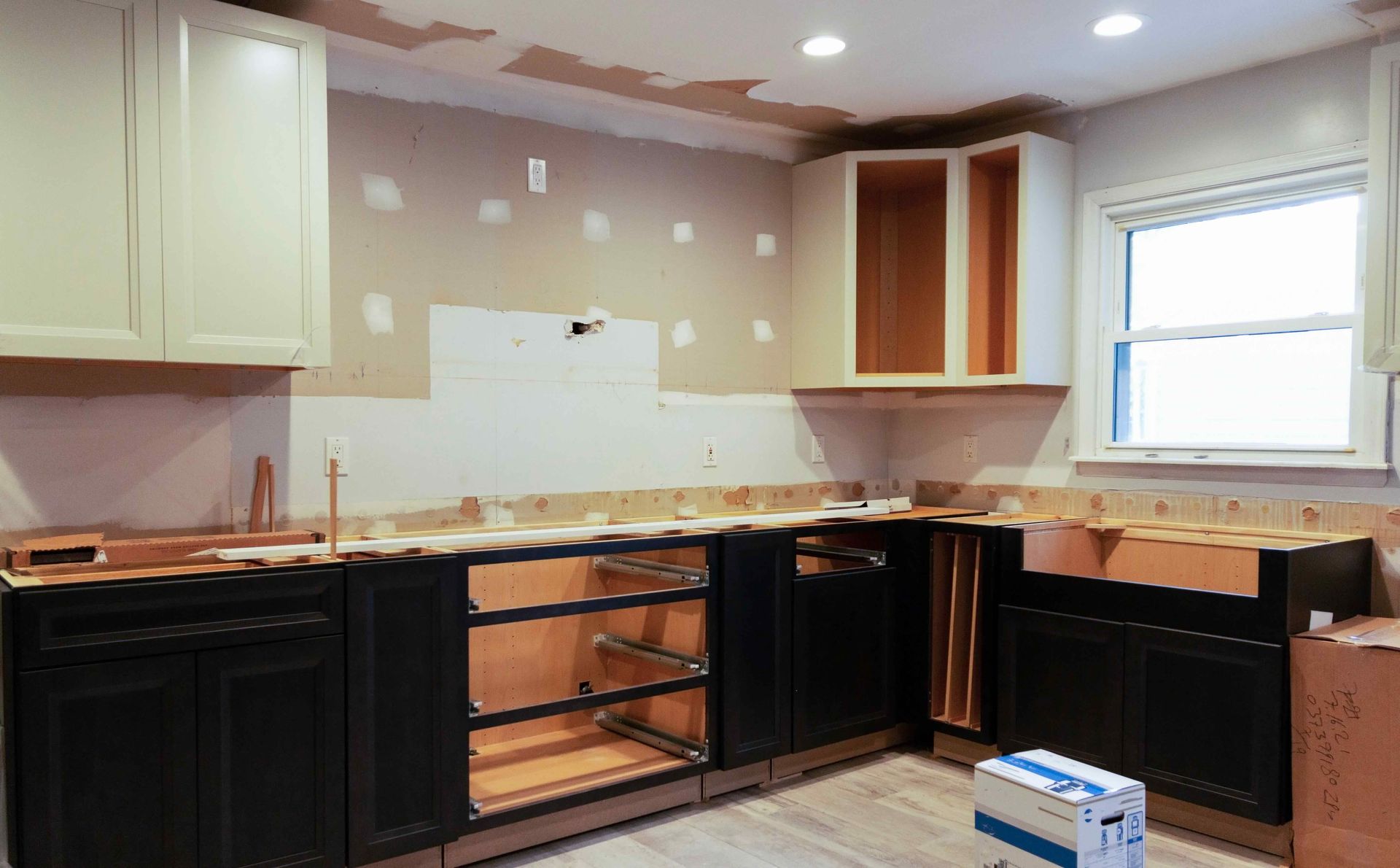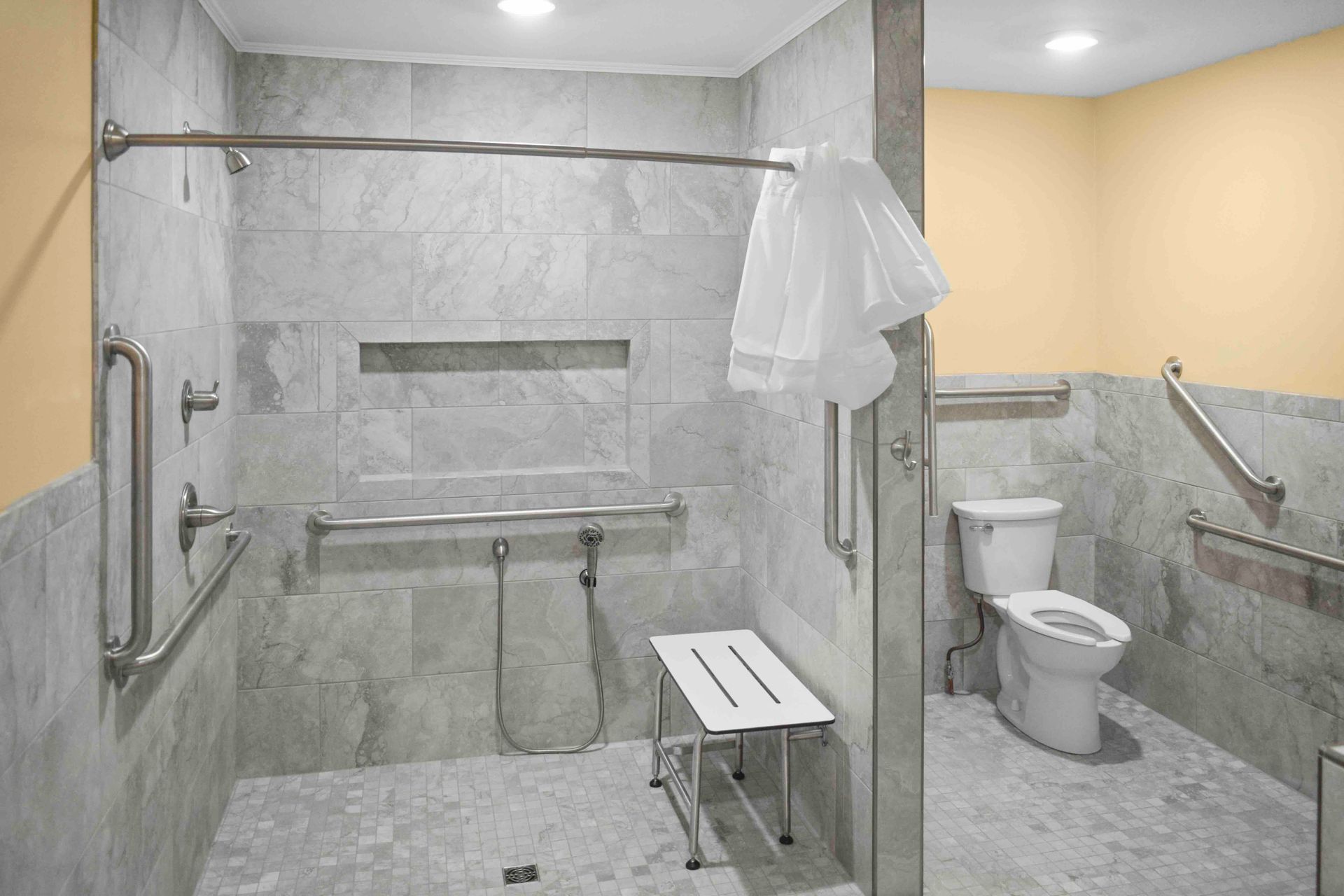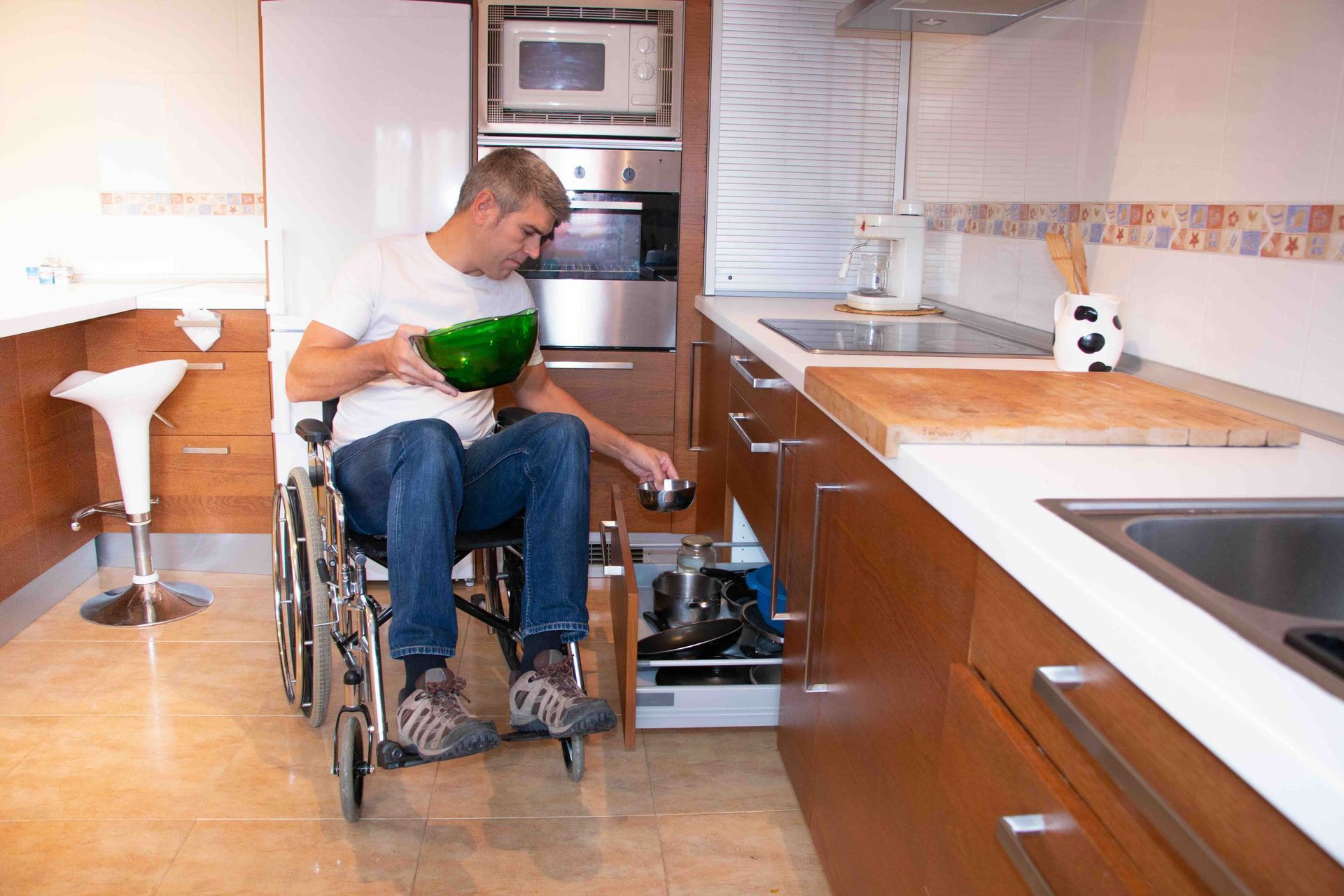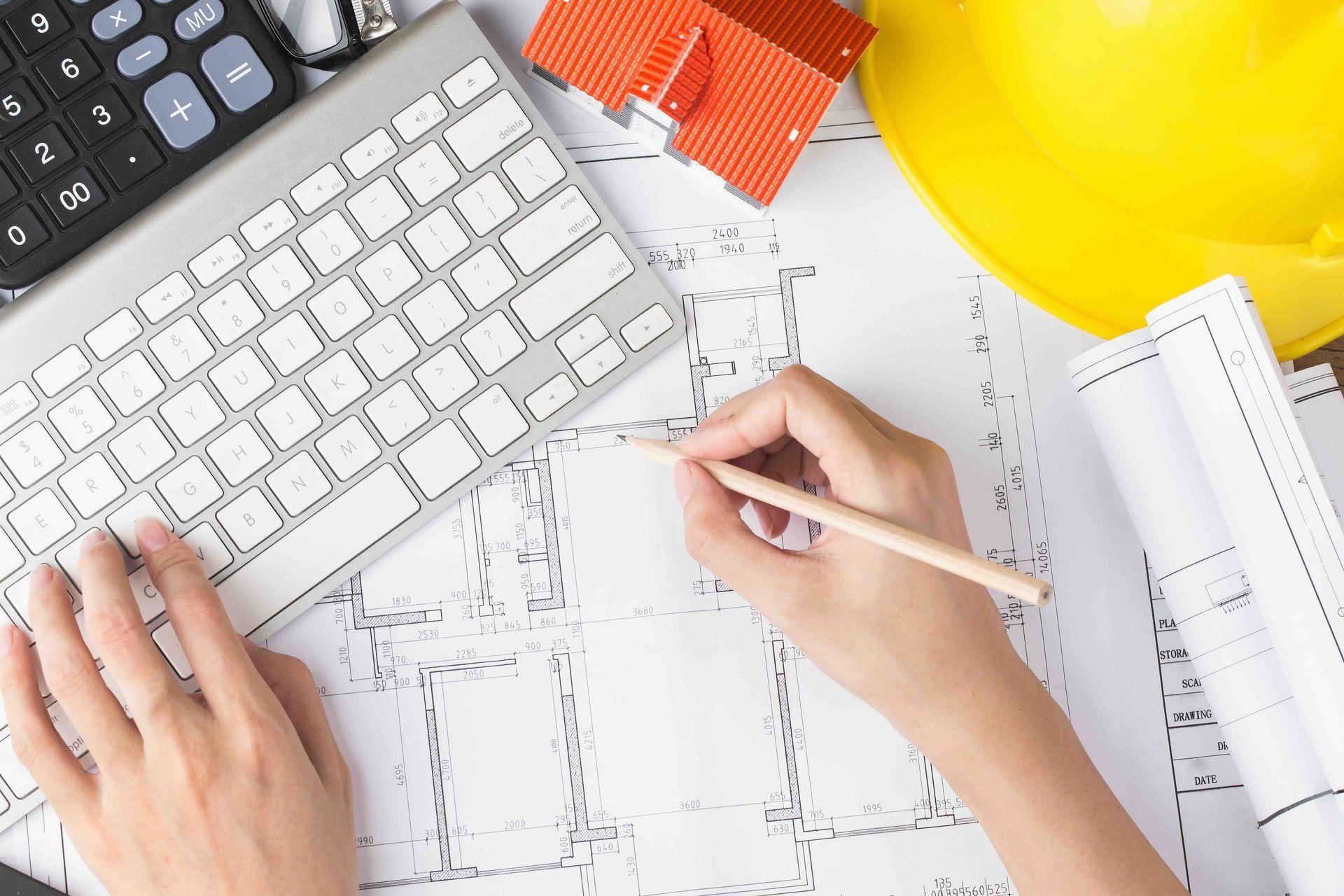Remodeling Ideas and Projects for a Veteran’s Home
Imagine a world where navigating your home isn't a daily obstacle course. This reality becomes possible through thoughtful, accessible design, a concept that holds immense significance for veterans and people with disabilities (PWDs). Architects, designers, facility owners, and developers – these decision-makers are the architects (quite literally) of a more inclusive future. Their choices in construction and renovation can empower veterans and PWDs to live with greater independence and dignity.
The most significant benefit for seniors is that accessible homes let them keep their independence. They can do things for themselves without always needing someone to help, which makes them feel proud and in control of their lives. Modifying a home to be barrier-free makes it safer for seniors. This means they're less likely to fall and get hurt and less likely to have to move into a care facility because of an accident. Accessible living spaces are just more manageable and more comfortable to use. Seniors don't have to struggle as much, which is better for their bodies and improves life overall.
Staying in their own home gives seniors a sense of comfort and security, surrounded by familiar things and memories. This helps fight loneliness and is essential for their mental health, especially if they have any memory problems. Plus, aging in place is often much more affordable than moving to an assisted living facility or nursing home, where the costs can be very high.
When seniors can do more for themselves, things are more accessible for their families and caregivers. It reduces stress and allows family members to take time for themselves without worrying so much. Knowing their loved one is safe in a home designed to meet their needs gives families great peace of mind. Accessible homes can allow grandparents, parents, and children to live together and support each other more easily.
Beyond Ramps: A Spectrum of Accessibility Needs
Accessible design extends far beyond the ubiquitous wheelchair ramp. While ramps are essential, a genuinely inclusive environment considers many physical limitations. Veterans returning from service may have injuries affecting mobility, talent, or vision. Similarly, PWDs navigate a spectrum of challenges.
Here's where the expertise of architects and designers comes into play. Understanding the specific needs of veterans and PWDs is crucial. Consider these critical areas for accessible design:
- Mobility: Wide doorways, level thresholds, and ample turning space in hallways are essential for wheelchairs and walkers. Elevators or stairlifts may be necessary for multi-story buildings.
- Dexterity: Lever handles on doors and cabinets, voice-activated appliance controls, and bathroom grab bars contribute to a more user-friendly environment.
- Vision: Good lighting with adjustable controls, clear signage with contrasting colors, and wider hallways for better spatial awareness are crucial for those with visual impairments.
- Cognitive Function: Simple, intuitive layouts, clear labeling, and predictable routines in building design can benefit individuals with mental disabilities.
Maximizing Independence for Veterans
Veterans who have served our country deserve to live with dignity and autonomy. Accessible design plays a vital role in this. Imagine a veteran with a prosthetic leg easily maneuvering around their kitchen thanks to lowered countertops and pull-out shelves. Picture a veteran with limited vision confidently navigating their bathroom due to strategically placed grab bars and bright, evenly distributed lighting. These seemingly minor design considerations translate to a world of difference in a veteran's daily life.
The positive impact of accessible design extends far beyond the individual. Inclusive homes and communities foster a stronger sense of belonging for veterans and PWDs. Families are relieved of the constant worry about falls or accessibility issues. Society benefits when veterans and PWDs can participate fully in all aspects of life, contributing their talents and experiences.

Adapting Homes for Veteran's Needs
Many veterans return from service with physical limitations that make daily life in their homes a struggle. Tasks that most people take for granted, like using the bathroom or entering a doorway, can become frustrating or even dangerous. However, thoughtful modifications to their living space can make a difference.
Overcoming Barriers: Ramps
For veterans with reduced mobility, steps present a significant challenge inside and outside the house. Installing ramps for all entrances drastically improves accessibility. Even replacing small sets of indoor steps with ramps can make movement within the home significantly more accessible. Permanent or portable ramps offer a safe solution; always install them alongside sturdy railings for safety.
Ease of Movement: Doorways & Hallways
Using a wheelchair or walker often means tight squeezes and complex maneuvering around standard doorways and hallways. Widening these passages provides essential space and reduces frustration. Additionally, veterans who struggle with grip or fine motor skills in their hands can benefit immensely from swapping traditional doorknobs with easier-to-use lever handles.
Bathrooms: From Challenge to Comfort
While most of us don't give it much thought, a simple bathroom trip can be a source of frustration and even danger for veterans with disabilities. Making some fundamental changes can create a much safer and more accessible experience in this essential room:
- Secure Support: Grab bars are essential! Place them both near the toilet and strategically within the safety shower.
- Preventing Slips: Non-slip mats inside the shower or tub are a must. Consider adding them around the sink and toilet, especially if floors get wet.
- Accessibility Upgrade: If your veteran uses a wheelchair, converting a standard shower into a roll-in style or a bathtub into a walk-in tub can significantly improve their independence and bathing experience.
The Kitchen: Regaining Independence
Meal prep and cooking can be especially difficult for veterans with limited mobility. Here's how to make this critical space work for them:
- Customization: For wheelchair users, lowering countertops allows for easier access. Creating open spaces below sinks means a wheelchair can roll right under.
- Storage Solutions: Pull-out shelves, rotating "lazy Susan" style cabinets, and other easily accessible storage items are within reach. This reduces the need for straining or asking for help, which boosts a veteran's confidence along with their independence.
Flooring: Safety and Ease of Movement
The type of flooring underfoot can have a significant impact on how well your loved one can navigate their home:
- Remove Hazards: Rugs and loose floor coverings are a tripping risk and should be removed.
- Smooth Navigation: Homes with many carpets are challenging for wheelchairs, walkers, or canes. Hardwoods or linoleum offer a softer, safer surface.
- Compromise: If carpeted areas are desired, choose a low-pile option (no higher than 0.3 inches) that's much easier to maneuver.
Navigating Stairs: Safety and Solutions
Stairs pose a significant challenge for many veterans, ranging from increased risk of falls to being completely inaccessible. Here are strategies to improve safety and independence:
- Mechanical Assistance: A stairlift can be a life-changing solution for veterans who have difficulty with stairs. These devices provide a safe and controlled way to travel between floors.
- Fall Prevention: If your veteran can climb stairs independently but you're worried about falls, non-slip stair treads increase traction and make each step safer. Additionally, installing lights along the staircase ensures they can see clearly, especially at night.
- Adapting living spaces: Sometimes, the best solution is eliminating the need for stairs. If possible, help your loved one relocate their sleeping area downstairs. This might be a temporary change during recovery or while waiting for a more permanent solution, like a stairlift.
Additional Considerations
- Handrails: Ensure existing handrails are sturdy and at a comfortable height. Installing handrails on both sides of the staircase provides extra support if needed.
- Professional Consultations: If you're considering significant renovations or installing a stairlift, consult an occupational therapist or home modification specialist. They can assess your veteran's needs and recommend the best solutions for your home.
Aging in Place: A Choice for Independence and Comfort
For many veterans, whether they have disabilities or not, the preference is clear: they want to stay in their own homes as they age. Aging in place means staying put rather than relocating to a specialized healthcare facility. To make this successful, veterans need to have a plan, and that often involves modifying their home environment and establishing a solid support system that might include family or professional home care services. Of course, having access to affordable and accessible housing plays a crucial role in allowing older adults to remain in their homes and communities as they age.
Deciding whether to age in place or move into assisted care is never easy. It's a complex mix of emotional needs, physical capabilities, and financial realities. Despite the challenges, staying put has become the top choice for most people approaching retirement.
Why is aging in place so appealing? For starters, there's the familiarity and comfort of home. Many seniors cherish the memories built within their houses and the sense of belonging in their neighborhood. Staying put can also mean maintaining greater independence and control over their daily lives. Furthermore, aging in place can sometimes be a more financially manageable option for those worried about the high cost of senior living facilities.
However, it's equally important to acknowledge that aging in place has its hurdles. Veterans may need to adapt their homes to accommodate changing physical needs, ensuring safety and ease of movement. It's wise to proactively establish a support network, whether family, neighbors, or professional caregivers, to offer assistance when needed.
Ultimately, choosing where to live in one's later years is deeply personal. The growing popularity of aging in place reflects the desire of many veterans and seniors to maintain a sense of home, independence, and connection to the community as long as safely possible.
TALK TO THE EXPERTS OF LAKESHORE BARRIER FREE TODAY!
We believe that everyone should have access to every area of their home! We work directly with you to make sure that every grab bar, bathroom sink, kitchen countertop, patient lift, and more is at the perfect location for you and your loved ones. Call us at
(616) 477-2685 or email us at
Info@LakeshoreBarrierFree.com
Share this blog







